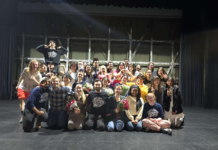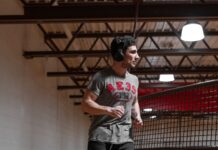One thousand hackers crammed themselves into the hallways, study rooms, computer labs, and anywhere in-between inside Engineering 5 to build something — anything really, as long as some code was involved — for Hack the North, which ran from Sept. 16 to 18. Hosted by the University of Waterloo, it’s the biggest hackathon in Canada.
Despite being only in its third year, Hack the North has already gained global traction and reaches over 5,000 people from 800 schools, representing 57 different countries. To cut out 4,000 applicants was an onerous task for Hack the North’s co-director Kaitlyn Yong and her team. “We went through every application twice in 15 days,” said Yong. “We don’t filter; we have no quotas for Waterloo students or international students.” After all was said and done, 1,000 hackers from 21 different countries including China, Australia, India, the United Kingdom, Spain, Singapore, and Israel were set to collaborate and compete.
Applicants do not need to be seasoned software engineers or developers to have a chance to participate. Organizers “care about the type of people we bring to the event, what they can bring, what we can give them, [their] potential to learn, their grit, their hustle, and just why they want to be here,” explained Yong. A prime example of this is Toronto high school student Atharva Washinkar who “didn’t know Android or web development. I just came in and learned everything.”
The legitimacy and smoothness that the event has established is what entices tech giants like Google and Facebook to continue their sponsorships. “The fact that Hack the North is a very well-run, really organized event. We know what we’re going to get,” said Terry Ryan, a developer advocate for Google. “You get access to tons of people [and] we want to know what they’re thinking, what they think about our tech, and help encourage them to move the next step into the industry.”
Of course, sponsors play a huge role in funding the event. To add a further incentive for students to participate in hackathons like Hack the North, almost all of their expenses are covered or reimbursed. For the past two years, 100 per cent of all participant travel expenses were reimbursed. Due to an uptick of international participants this year, organizers were only able to cover around 70-90 per cent, depending on where the participant was coming from and the price of the ticket they booked.
For a lot of international participants, getting that acceptance email is only the first step to making their way over to Canada. After that, they still have to apply for a visa to enter the country, a challenge the Hack the North organizers tried their best to accommodate. “We had almost 200 people flying in, so visas did work out, but that’s probably the most difficult thing every year,” said Yong. “How do you keep applications open as long as possible so you have as many people [as possible] applying, but also how do you turn over and get those applications out in time for visa applications?”
Once participants made it to the Waterloo campus, they entered hacker paradise. Caterers provided breakfast, lunch, and dinner; there was a never-ending supply of snacks, water, pop, and coffee. An extensive list of hardware supplies including circuit boards, virtual reality (VR) headsets, Bluetooth beacons, Raspberry Pis (a single-board computer), and anything else a hacker would need were at hand. If hackers needed help, mentors were on standby via Slack. Software company sponsors encouraged contestants to use their open-source API and had developers on location to help integrate it into their projects. Sponsors also organized workshops and talks.
Sleeping accommodations were a little lackluster as there were only 100 beds available inside Engineering 6, but being well rested goes against the innate values of a hackathon. “Often time, a lot of hackers will sleep for one or two hours. They’ll nap on their desks and get back up and keep coding,” said Yong.
Hackers are put into an environment where they are enabled to learn new concepts and can bring their craziest ideas to life. Joey Li, a computer engineering student from the University of British Columbia and his team had a goal to create a smart microwave that automatically plays a YouTube video on your phone that’s the same length as your food’s cook time. “Neither of us are super fluent with electrical circuits. We’re both heavy into software, so we took on this challenge of dissecting this microwave with little data or information,” said Li. “It’s just something about the hackathon spirit that really helps you get stuff done, especially wacky projects like this that everyday you wouldn’t really spend time on.”
After 33 hours of coding, teams submitted their product. Three judges declared 12 finalists — there is no single winner at this hackathon. Finalists’ projects were diverse and creative, including a pinball machine, a clock that indicates the location of your roommates, a VR headset that lets you simulate a medical operation, a “brickbreaker” like game that allows players to break bricks that contain words from Donald Trump tweets, an algorithm that creates a “structured” rap song, and more.

































